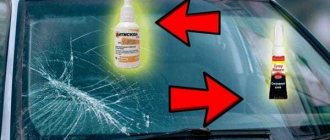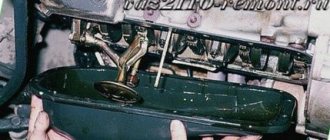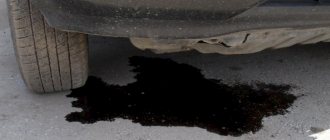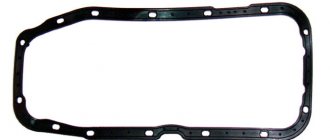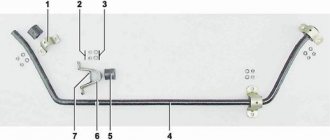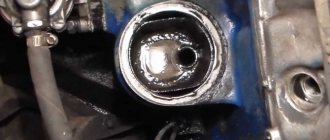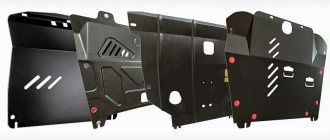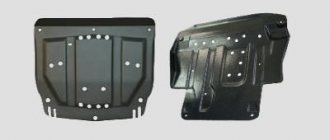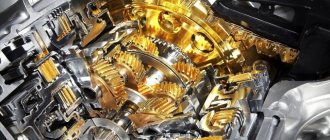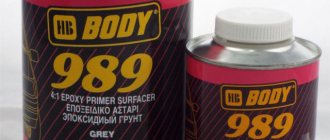Sealant selection criteria
To select the appropriate material for repairing the engine lubrication system, you need to consider the following:
You should not buy cheap engine sump sealant from unknown manufacturers. The high-quality composition has factory packaging indicating the country and name of the manufacturer, instructions and recommendations for use.
It is better to purchase repair products from large auto stores or branded car dealerships.
Oil pan sealants differ in chemical components, temperature tolerances, constituent chemical elements, degree of flexibility of the seam formed, and level of operating loads. Main types of repair trains:
Silicone
The silicones included in the paste for repairing the engine lubrication system give it a high degree of adhesion, the ability to maintain properties at sharply changing temperatures, dielectric properties, and chemical inertness.
This explains the great demand for this type of sealant among service station mechanics and car enthusiasts. The components in the composition polymerize due to moisture from the environment and quickly form a solid, sealed seam.
The silicone composition hardens within 8–12 minutes. Therefore, you need to connect the parts quickly enough so that it does not have time to set.
Advantages of silicone composition:
Anaerobic
These clamps appeared on sale 4-5 years ago. An anaerobic engine sump sealant requires the absence of oxygen to be effective. To do this, the composition is applied to the adhesive surfaces, which are then compressed with force to squeeze out the air between them. Coupling occurs within 25–35 minutes.
If the application surface is uneven, oxygen may remain between the parts. This will prevent the sealant from completely curing.
Features of anaerobic sealant:
Heat resistant
Since the engine is a source of elevated temperatures, the sealant for repairing its components must be heat-resistant.
These compositions have a working temperature tolerance of up to 380 ⁰C.
To work with elements of the bottom of the engine oil flask, materials with thermal stability indicators of up to 190 ⁰C are suitable.
How to properly apply sealant to the engine sump?
Automotive manufacturers supply the market with innovative products, the use of which simplifies the repair and maintenance of vehicles. Instead of classic rubber gaskets, many car owners use special compounds. Engine sealant has a liquid consistency and is easy to apply. It is highly effective and serves as a good replacement for old seals.
Varieties
Products for sealing cylinder head covers and oil pans have a liquid consistency. The main function of the valve cover gasket sealant is to ensure complete absence of lubricant leakage from the engine cylinder head.
To choose the right sealing compound, you need to consider what components the engine sealant is made of and whether the substance has sufficient heat resistance. High-quality preparations for the prevention and repair of internal combustion engines are anaerobes and silicones.
Anaerobic sealant
The main advantage of using anaerobic engine sealant is the long-term activity of the components in the presence of air and rapid hardening in the absence of oxygen. This allows a repairman or a novice motorist to correct the mating of the parts being processed. In simple words, if you were unable to apply the cylinder head sealant correctly the first time, you can slowly align the contacting parts for a tight seal. Advantages of Anaerobes for Valve Caps:
- Solidification rate in air and airless space.
- Obtaining a uniform sealing film on parts.
- Wide operating temperature range, thermal stability.
When using anaerobes, you need to apply the product to one part and press it firmly onto the mating surface. If oxygen is left available, the cylinder head gasket or crankcase pan sealant will retain a liquid consistency for a long time.
An important condition for quick sealing is a tight connection of the parts. Be sure to apply anaerobes to a clean, dry surface to prevent the ingress of foreign impurities. Engine sump sealant should be used immediately before assembly.
Note: The disadvantages of anaerobic agents include a limitation on the thickness of the sealing layer (0.5 mm), lack of hardening in case of incorrect application of the substance, and maintaining a lower operating pressure.
On video: Instructions for using anaerobic gasket sealants
Silicone sealant
The most popular at service stations and among vehicle owners is the valve cover sealant with a silicone component, which prevents oil leaks and has good sealing properties. Heat-resistant silicone sealant for engine repairs has the following qualities:
- Firmly seals cracks with gaps up to 6 mm.
- Resistant to mechanical stress.
- Provides elasticity to the repair seam.
- The sealant hardens upon contact with moisture.
- Adapted to the pressure of forced engines.
It is understood that when using an oil system sealant, it will polymerize when exposed to atmospheric moisture. Silicone compounds have a long service life and are recommended for experienced craftsmen and vehicle owners. Silicones can be used to seal the oil system so that engine oil will not leak from the engine compartments.
Attention: To properly seal, the silicone substance is applied to a clean surface of metal parts without oil, so the motor must be cleaned and degreased. On average, the hardening time of silicone is 10 minutes, but it is advisable to fix the elements faster before the substance hardens.
Repair
Despite the availability of synthetic sealants on sale, it is not recommended to use them for cylinder head gaskets. Such substances are more suitable for household use. Engine repair sealants are a group of products that can be poured into the engine oil system or engine cooling system (stop leak). The product “works” for engine lubricant leaks, if it is impossible to determine the cause and nature of the problem.
Repair sealants are a temporary measure to eliminate emergency faults so that the owner can operate the engine until a full diagnosis and restoration of the engine is carried out. Motor sealant allows you to quickly solve the problem of a leak in the cooling system - the liquid must be poured into the appropriate engine compartment.
If, to restore the operation of the internal combustion engine, it is necessary to bore the cylinders for subsequent liner blocking, special-purpose heat-resistant sealants are used before seating the liners. Application of metal sealant helps to correctly fix the repair liners and ensure their reliable fit in the cylinder block without backlash and in compliance with technological clearances.
Packaging and equipment
For convenient use and storage, sealants are packaged in small tubes. The packaging ensures long-term preservation of the valve cover sealant. Most manufacturers produce products in compact tubes, up to one hundred grams. To make it convenient to apply the sealant to the oil pan, the tubes are equipped with caps with dispensers, which has undeniable advantages:
- Fixed amount of composition.
- Uniform distribution on parts.
- Preservation of qualities and properties for a long time.
To use the gasket sealant again, it is enough to remove some of the dried product from the dispenser with a sharp, thin object before repairing the engine. Professional compounds for service stations and repair shops are produced in bulk packaging, and the products are applied with a pistol.
Rules for connecting parts
To repair an engine with liquid sealants, it is not enough to find out which sealant is best for the engine - you need to apply the substance correctly. This will reliably seal the engine. How to correctly change the sealant of the oil pan or cylinder head cover:
- Surface preparation – clean from carbon deposits, rust, oils and dirt.
- Remove worn seals, carefully remove so as not to leave scratches.
- Degrease surfaces with solvent, white spirit, purified gasoline, and dry.
- Apply a layer of sealing compound, removing the cap, to one of the parts, distribute the layer applied to the valve cover.
- It is necessary to maintain the thickness of the layer and make the coating uniform.
- The silicone should be allowed to “set” for about 15 minutes, and then the parts should be pressed tightly.
- If you use an anaerobic compound to replace the oil pan sealant, you can fasten the parts at any time.
The final tightening of the bolts in the case of applying silicone is carried out half an hour after the surfaces have been pressed and not fully tightened with bolts.
Important: Over-tightening the fixing bolts can squeeze out the applied compound and make the connection leak. You can operate the motor after 0.5-12 hours.
What to use
Automotive manufacturers produce a wide range of sealants. Substances differ in composition and rate of hardening. Which sealant to place the engine sump on is chosen depending on the purpose, versatility and quality of the product.
"Stop-flow"
Sealants of this category are intended for engine lubrication systems; they are poured directly into the engine. The composition does not allow oils to leak out of the engine. One of the most popular products is Hi-Gear 9041 (or 9043) Engine Sealant. Does not come into contact with an aggressive oil environment, restores the elasticity of oil seals and seals, and is suitable for preventive purposes. Hi-Gear engine oil system sealant is compatible with different types of motor oils, the scope of application is gasoline and diesel internal combustion engines.
Metal-ceramic sealant eliminates antifreeze leakage through the cylinder head gasket. You can repair aluminum and cast iron cylinder heads so as not to use welding. It withstands vibrations, shocks, deformations, high temperatures and pressure, and is in normal contact with engine oil and coolant.
Review of common sealants
Today, most automakers also produce related components and materials for repairing their car brands. Therefore, you can purchase an original sealant personalized for your car brand.
If this is not possible, then analogues with similar properties will do.
Motor heat-resistant repair compound GOETZE (gray) made in Germany, Liqui Moli, Hi Gear and anaerobic Loctite have proven themselves to be quite good. The main advantages of these sealing pastes are:
The price of these products for the oil pan is 750–900 rubles.
Elring and REINZ (Germany) for the engine cost 350–500 rubles. They are not inferior in many respects to the previous ones. The only difference is that it takes longer to cure.
Abro sealant 5 years ago was a favorite among auto mechanics. Has high quality indicators. But over the past 3-4 years, many fakes have appeared. Therefore, buying Abro can be compared to a lottery. Its cost is 150–250 rubles.
Sealant for engine oil pan, types, use, selection
When performing a major overhaul, there is a great need to assemble all the parts while ensuring the tightness of the joints of the parts. A special sealant for the oil pan will do the job well. It is used for leaks and damage to old gaskets.
How to choose
Before choosing, read the information on the package; a quality engine sealant satisfies the following needs.
- Use on materials such as steel, aluminum and cast iron.
- Resistance to temperature changes, vibrations and loads.
- Operating temperature range from -60 to + 300 ⁰С.
- Moisture resistance, immunity to oils and other motor fluids.
- Creation of a durable and elastic gasket.
Cheap sealant is not always the joy of saving money. Usually these are still negative emotions from work that needs to be redone. Such compounds (most of them are cheap) do not have a clear description or recommendations. It is difficult to determine the country of production on them. Don't buy questionable products.
Kinds
Not all oil pan sealants are created equal. They are divided into several groups having different components in their composition. They also need to be used in different ways.
Anaerobic
These sealants are new but are a popular product for repair purposes. Adhesion and hardening occurs when two parts are compressed for half an hour. Read the manufacturer's packaging for exact instructions.
Oxygen has an effect on the mixture due to which it can remain soft, as if it had just been squeezed out of the package. This way you don’t have to rush to press the parts, but carefully spread the required layer around the entire perimeter.
The maximum layer applied by anaerobic products is up to 5 mm. In this case, the surface must be flat. When the sealant is smeared on the part, dust, sand and other small debris may “fall” onto it. In this regard, it is recommended not to tighten the pressing of parts. The more debris that wet sealant collects, the worse its cutting properties will be.
Silicone
Perhaps the most popular sealant for engine repair. The mixture can be applied in a layer of up to 6 mm. The resulting gasket seam remains elastic for a long time. Designed to work with high pressure.
Before use, the surface must be thoroughly prepared (cleaned and degreased). The silicone mixture for the crankcase (compared to the anaerobic composition) hardens due to air humidity, so do not delay pressing the parts. Read the instructions on the packaging, it usually indicates the exact time that you need to wait and then press the parts firmly.
Repair
This type of sealant is classified as an express product that does not replace the need for repair work, but only “delays” it a little. As a rule, they are sold in liquid form. The engine filler neck (where engine oil is poured) is filled with oil, after which the repair sealant itself finds oil leaks and successfully stops them.
You can carry the repair product with you in reserve. If trouble happens on the road, he can be of great help.
Popular companies
Today you can buy many good products from popular companies. These are Liqui Moly, Hi Gear, GOETZE, Loctite. Each sealant meets the following requirements:
- Fast action
- Ease of use
- Temperature range from -55 to +230 degrees.
Proper Use
- Clean and degrease the surface of the part where we are going to apply the mixture.
- The air temperature should be at least +10 and above.
- When using silicone sealant, the entire procedure should take no more than 15 minutes. Otherwise, the mixture will begin to harden without pressing.
- After applying the sealant to the oil pan, install it in place and tighten it with bolts.
- It is better to operate the car after 6-12 hours.
Expert opinion
Before repairing the engine, take a closer look at the sealants. When choosing, pay attention to the production date and general expiration date. If you find expired sealant, return it to the store. This product cannot be used regardless of the brand and cost.
After work, do not rush to use the car. After all, this is a large load on the sealant gasket that has not yet dried. It is better if it is left to dry for 24 hours.
Follow the manufacturer's instructions and recommendations. Even if you know all the steps and stages of work by heart, still familiarize yourself with the packaging. This can help you out a lot.
Source: https://gogermetik.com/vybor-germetika-dlya-poddona-kartera-dvigatelya.html
Types, features and rating of the best sealants for automobile engines
What sealant is needed for the engine oil pan? There is a red ABRO, would this be suitable? Golf 4, pan without gasket, only sealed
You can essentially choose any gasket sealant that is oil- and gasoline-resistant. Here's a comparison in the video
The one you have from the ABRO series will also work. Although it is more often used in places where the temperature is high, that is, it is, as it were, heat-resistant. And the fact that there is some boy in the video, he says it froze or did not freeze - it depends on the layer of sealant, on the ambient temperature and the hardening time. I used ABRO, both black and red in various places on the engine - excellent sealants, holding both antifreeze and oil.
ABRO sealants are of high quality, use them, the main thing here is to apply the sealant without excess, so that it does not squeeze out into the internal combustion engine, otherwise these snot will break off and clog the oil receiver.
to our channel in Yandex.Zen
Even more useful tips in a convenient format
Many world-famous manufacturers have long opted for polymer compounds for sealing elements of a car’s lubrication system, pushing the once traditional gaskets a step back.
In terms of their performance properties, liquid sealants are far ahead of classic gaskets. They harden easily if certain conditions are met, determined by the chemical formula of the product.
Engine sump sealants began to be produced not so long ago, but have already successfully conquered their niche, proving in practice their beneficial properties and effectiveness of use. The main purpose of such technical fluids is not only to replace failed gasket sets, but to prevent oil leakage through the valve cover of the oil pan housing.
Today, the market for automotive consumables and related materials offers a fairly large selection of sealants. They may differ from each other in color, temperature, constituent chemical elements, degree of elasticity, level of resistance and many other performance characteristics. Basic qualifications divide sealants into three main types.
Silicone
The most popular, both among professional craftsmen and novice car enthusiasts. It is very convenient to work with, as it contains natural ingredients. They quickly take on a solid form upon contact with moisture present in the air.
About ten minutes is enough for the required volume of liquid to accumulate. This time is enough to secure the necessary elements. But if you are working with large parts, then you should be more careful when working, because the liquid sealant can harden even before the two units are fixed.
How to disassemble a laptop power supply? How to open the internal or external power supply
The laptop power supply is capable of ensuring uninterrupted operation of the laptop in the absence of a battery or when it is completely discharged. It can also be used to charge the battery, thereby enabling the laptop to operate autonomously - without the use of an electrical network. Sometimes it happens that the power supply fails, and the user is faced with the question: is it possible to repair the device independently or will he have to buy a new one? Purchasing a new device will cost a pretty penny, so first you should try to repair the device yourself.
How to disassemble a laptop charger
Before starting repairs, it is necessary to establish the cause of the malfunction and its location. To determine the fault, the user will most likely be required to penetrate the “heart” of the power supply. Before opening your laptop's power supply, it's best to check with experts for advice, as the process may differ for different models.
The design of a small laptop battery is quite simple. If, in your opinion, the reason for the lack of charging lies in a malfunction of the adapter, then you can check this option using a special program. The most common causes of power supply failure are:
- damage to the nest;
- power surges;
- cord fracture.
Tools for work
To work you will need a set of simple tools:
- a knife, scalpel or other similar tool for opening the block body;
- screwdrivers;
- soldering iron with solder;
- napkins, gauze or other fabric;
- glue and syringe;
- gasoline or other solvent (optional). According to a number of experts, these tools greatly simplify opening the power supply.
How to open a laptop's internal power supply
Accessing the internal power adapter is much more difficult than accessing an external one. The reason lies in the need to open the laptop case.
Removing the bottom panel
All known laptop models can be disassembled in approximately the same way, that is, they have identical internal structure and components that require dismantling.
Important. It is worth remembering that independently removing the bottom panel of the device deprives the user of the right to warranty service, that is, if the laptop is still under warranty, then it is better to take it to a service center for repairs.
The bulk of the work comes down to unscrewing a large number of mounting screws. In order not to confuse or lose the screws, it is better to prepare a container with several compartments in advance.
Important. Before disassembling the laptop, be sure to disconnect the battery. If this is not done, there is a risk of a short circuit, which will inevitably lead to expensive repairs.
What else is needed when dismantling and installing the engine oil pan?
There are two types of seal. Ready-made stamped gaskets and seating of flanges with sealant.
If the car's instructions recommend using a ready-made stamped gasket, it is better to use a standard factory gasket. The old gasket should be removed; it loses its elasticity over time. , Permatex gasket sealers have been specially developed . They are designed to improve the quality of an existing gasket.
In the second option, when the flanges of the parts are coated with silicone sealant, the Permatex company suggests using its Ultra series compounds. Modern Permatex Ultra gasket formers are already the third generation of silicone sealants. They can not only replace ready-made gaskets, but also provide better sealing of the joint.
Three additional products when replacing the oil pan. After removing the pan, the remnants of the old sealant must be carefully removed. To facilitate this procedure, the Permatex company produces Permatex® RTV Silicone Dissolver for removing silicone gaskets . Clean the entire internal surface from dirt and remaining deposits.
Before applying a new sealant, the surface must be free of oil residues. Degrease for better adhesion of silicone to the metal surface. Here, Permatex recommends using Permatex® Non-Chlorinated Brake & Parts Cleaner . We do not recommend using gasoline or white spirit to clean flanges; they leave a thin oil film on the surface, which reduces the adhesion of silicone to metal.
When reinstalling the drain plug, it is recommended that you reapply Permatex® Single-Use Oil Plug Sealant.
Applying sealant to the oil pan
Many world-famous manufacturers have long opted for polymer compounds for sealing elements of a car’s lubrication system, pushing the once traditional gaskets a step back.
In terms of their performance properties, liquid sealants are far ahead of classic gaskets. They harden easily if certain conditions are met, determined by the chemical formula of the product.
Engine sump sealants began to be produced not so long ago, but have already successfully conquered their niche, proving in practice their beneficial properties and effectiveness of use. The main purpose of such technical fluids is not only to replace failed gasket sets, but to prevent oil leakage through the valve cover of the oil pan housing.
Today, the market for automotive consumables and related materials offers a fairly large selection of sealants. They may differ from each other in color, temperature, constituent chemical elements, degree of elasticity, level of resistance and many other performance characteristics. Basic qualifications divide sealants into three main types.
Silicone
The most popular, both among professional craftsmen and novice car enthusiasts. It is very convenient to work with, as it contains natural ingredients. They quickly take on a solid form upon contact with moisture present in the air.
About ten minutes is enough for the required volume of liquid to accumulate. This time is enough to secure the necessary elements. But if you are working with large parts, then you should be more careful when working, because the liquid sealant can harden even before the two units are fixed.
If this does happen, it is recommended to remove any remaining hardened sealant from the surface before attempting to connect the parts a second time.
The main advantages of silicone-based sealant are:
- indicator of the maximum thickness of the gap that is planned to be filled with a sealed compound - up to 6 mm;
- withstands fairly high pressure, which is very important for modern power structures;
- the formation of an elastic seam with long-term performance characteristics, which means that oil will not flow through the cylinder head (cylinder head), crankcase gap and/or engine sections for a long period
When using silicone sealant, you must remember that it works effectively only on surfaces that have been previously cleaned of dirt and oil.
Anaerobic
It is more modern than the previous tool. While silicone-based sealants require moisture to harden, anaerobic sealants require the absence of oxygen. To fasten two parts, it is necessary to apply the composition to a previously cleaned surface. Then connect the surfaces as tightly as possible, thereby stopping the access of air so that the sealant begins to harden.
When working, extreme care is required, because if even a small gap is not eliminated in any place, thereby not closing the oxygen flow, the anaerobic sealant will remain in liquid form.
Despite the fact that only the absence of oxygen is necessary for the sealant to harden, you should not delay working with it. If the composition is applied in advance to the surfaces to be bonded, then dust or dirt may naturally get on them, which will significantly deteriorate the quality of fixation.
Therefore, it is recommended to apply liquid sealant immediately before gluing two surfaces. If everything is done efficiently, the resulting seam will have a high degree of elasticity, which is an undoubted advantage for further use.
However, anaerobic sealants also have a number of disadvantages. The main ones include:
- small thickness of the cavity, only 0.5 mm compared to 6 mm of silicone sealant;
- under conditions of high pressure, the composition may be disrupted;
- if the composition is applied unevenly, part of it may remain in its original liquid state
Heat resistant
When choosing a sealant from a particular manufacturer, it is recommended to carefully study the attached instructions. Some formulations are suitable for a certain make of car. To date, there are no serious problems in the availability of sealed compounds. You can buy them at a car store, service center, or order delivery from a catalog on various online resources that correspond to the topic.
You should give your preference to well-known brands that have been proven over the years. Of course, they are much more expensive than their Chinese counterpart. However, for the money spent you can be guaranteed to get a good quality sealant with high performance characteristics.
In order to insure yourself against purchasing a counterfeit at the price of a branded product, when purchasing, you should pay close attention to the presence of a hologram, barcode and other control markers on the packaging, which real manufacturers must apply to the packaging.
What qualities should a gasket former have for this job?
- The sealant must have good elasticity and tensile strength.
- The lid is often thin-walled. Soft metal, unlike hard metal, will not crack upon impact, but will simply bend. But the high viscosity and thin walls of the pan do not allow for structural rigidity. The gap between the flanges can vary significantly.
- The composition must have increased resistance to oils
- There will be constant contact with engine oil. The oil contains chemical and mineral additives that have an aggressive effect on the regular silicone composition.
Source: https://litezona.ru/nanesenie-germetika-na-poddon-kartera/
What kind of sealant for the engine oil pan?
What sealant is needed for the engine oil pan? There is a red ABRO, would this be suitable? Golf 4, pan without gasket, only sealed
You can essentially choose any gasket sealant that is oil- and gasoline-resistant. Here's a comparison in the video
The one you have from the ABRO series will also work. Although it is more often used in places where the temperature is high, that is, it is, as it were, heat-resistant. And the fact that there is some boy in the video, he says it froze or did not freeze - it depends on the layer of sealant, on the ambient temperature and the hardening time. I used ABRO, both black and red in various places on the engine - excellent sealants, holding both antifreeze and oil.
ABRO sealants are of high quality, use them, the main thing here is to apply the sealant without excess, so that it does not squeeze out into the internal combustion engine, otherwise these snot will break off and clog the oil receiver.
to our channel in Yandex.Zen
Even more useful tips in a convenient format
Sealant for engine oil pan: types, properties, rating of the best
The above sealants are used not only for automatic transmission pans. They are used to glue cracks and joints in pipes, sinks, and seams in the floor. Silicone sealants have excellent UV resistance. They prevent the penetration of mold and mildew.
Pan sealant prevents the penetration of dust and moisture into the automatic transmission. The oil retains its properties longer. Gaskets under sealant from Victor Reinz and other well-known companies, for example, Permatex, Done Deal remain resistant to the influence of aggressive environments during the cold season. The salts that are sprinkled on the asphalt during icy conditions cannot penetrate the automatic transmission, and the metal along the edges of the pan, where it comes into contact with the sealant, does not rust. The service life of the pallet is increased.
If not, then the following instructions will help you avoid the unpleasant moments of incorrectly applying the sealant.
- Wash the automatic transmission pan completely using carbocleaner or kerosene.
- Remove the gasket and degrease the base on which you will apply the material. Use acetone or alcohol to degrease.
- Prepare sealant for application to the automatic transmission pan. Open the tube of sealant. Place the spout on it to apply the composition and screw it tightly.
- Apply it to the surface of the box pallet in an even layer. Do not forget about the thickness - no more than 0.5 mm. Do not allow the compound to extend beyond the edges by more than 1 mm.
- After applying the material, install the pan on the automatic transmission and tighten the bolts.
- Forget about the car for a day. After 24 hours have passed, you can safely operate the car.
Sealant selection criteria
To select the appropriate material for repairing the engine lubrication system, you need to consider the following:
- The sealing compound must be resistant to temperature changes, shock loads and vibration.
- Create strong and elastic adhesion to surfaces of complex textures (metal of varying densities).
- Be resistant to moisture, oil, lubricants and coolants.
- Have an operating temperature range from -60 to 300 ⁰С.
- The chemical composition is neutral to elements made of cast iron, aluminum, steel.
Tray for sealant - logbook of 1999 FIAT Punto BZ.Gamma'97(Sole) on DRIVE2
A couple of days later I had a trickle of oil on the pan, and now after the winter my engine floor is covered in oil (partial photo)
Lubricated the engine quite well) So in short: I bought sealant from a German manufacturer in a store
I drove my Punt to my father’s pit. I prepared the tool (you will need a lot of it), since you will also have to remove quite a few components. I unscrewed the plug and drained the oil
First, I removed the fan (it’s easier for me to remove everything else without it)
Then I removed the crankcase gas vent (I have 2 studs and 1 bolt)
very difficult to unscrew
then he removed the gearbox protection and unscrewed all the bolts and nuts on the pad.
that's how oily they are
Then I cleaned the sealant from the pan
Then I degreased everything (with a solvent) and let it dry. I applied new sealant (I didn’t take a photo because I was in a hurry) I installed the pan in 4 minutes (I was surprised myself, I installed it alone)
Then I put everything back and left Punto overnight without adding oil.
How to choose the right sealant for the engine sump
Many world-famous manufacturers have long opted for polymer compounds for sealing elements of a car’s lubrication system, pushing the once traditional gaskets a step back.
In terms of their performance properties, liquid sealants are far ahead of classic gaskets. They harden easily if certain conditions are met, determined by the chemical formula of the product.
Engine sump sealants began to be produced not so long ago, but have already successfully conquered their niche, proving in practice their beneficial properties and effectiveness of use. The main purpose of such technical fluids is not only to replace failed gasket sets, but to prevent oil leakage through the valve cover of the oil pan housing.
What is the best sealant for a car engine?
Many manufacturers are abandoning traditional car engine lubrication system gaskets, replacing them with quickly hardening polymer compounds. Such sealants are sold in a liquid state and harden under certain conditions, which depend on the specific chemical formula of the product.
Selecting a sealant for the engine lubrication system is quite difficult, since the car owner must pay attention to several factors at once, including the chemical composition and temperature resistance.
Specifications
Now you know what sealants are available and where they are used. But not every sealant is suitable for automatic transmissions. For example, sealants that are used for manual transmissions are absolutely not suitable for automatic transmissions.
For modern automatic transmissions of cars, I would prescribe Permatex. This is a special mixture that successfully maintains elasticity and at the same time provides better adhesion to metals.
General technical characteristics of all sealants are:
- sound insulation;
- dust insulation;
- dirt protection;
- oil resistance;
- preventing leakage of gases and liquids.
Attention! Expired products will not provide reliable sealing of the automatic transmission tray. Therefore, when purchasing, always pay attention to the expiration date of the material.
Types of sealants
The most popular among motorists is the classic silicone oil system sealant, which is very easy to use. The natural components of such an engine repair product take on a solid state upon contact with moisture that is constantly in the air.
The most popular is silicone sealant
It takes approximately 10 minutes to accumulate the required volume of liquid - this time is quite enough to fasten the parts. However, in some cases it is better to hurry - if you are going to install an engine pan or other large component, the sealant may harden before the two parts of the assembly are connected. In such a case, it is better to remove the remaining product before the second attempt to assemble the engine oil system.
Silicone sealant for engine repair has a number of advantages over other types of compounds:
This is why silicone compounds are recommended for most car enthusiasts - it is quite difficult to make a mistake when working with them. Their only disadvantage is the need to thoroughly clean the connecting planes and plan all actions before starting work.
Video about proven sealant:
A good alternative is anaerobic engine sealant - such products appeared relatively recently, but have become very popular in the professional environment. If the presence of water is necessary for the hardening of silicone sealant, then in this case we are talking about the absence of another substance - oxygen.
To use such a product, you need to apply it to the part and forcefully press it to another surface. It seems like everything is very simple, but you need to be very careful, because while maintaining access to oxygen, the sealant will remain liquid.
The main advantage of anaerobic sealant for the engine pan is the ability to slowly apply such a product to the surfaces being joined - until the parts are tightly pressed against each other, hardening will not occur. Of course, the effectiveness of sealant hardening may be affected by the presence of foreign impurities in it, including water and dust, so applying the product several hours in advance is not recommended.
Also, such a composition has fairly high elasticity after hardening, which ensures durability and reliability of the connection. But anaerobic sealants also have a number of disadvantages:
That is why it is better to entrust work with anaerobic sealant to a professional, and not to undertake it without relevant experience.
You should also pay attention to the temperature tolerances of the product you plan to use - they depend on the chemical composition, but are not determined by the presence of silicone or esters in it. To assemble a car engine, it is worth purchasing a specialized heat-resistant sealant that can withstand temperatures of 345–375 degrees.
If you use sealant when working with other car components located in the engine compartment, a temperature tolerance of 200 degrees will be sufficient. For other purposes, suitable products are those that are destroyed at a temperature of 150–175 degrees.
Types of sealants
Attention! After repairing the gearbox, be sure to apply a small layer of sealant to the edge of the pan. This will improve the sealing properties of the device and prevent oil from leaking if the gasket dries out. Therefore, the selected sealant must be heat-resistant.
When choosing a substance for sealing automatic transmissions, pay attention to the composition of the elements, which have their own characteristics. Based on the composition of the materials included in the sealant, you will find the following on the market:
- silicone. Consist of natural elements. Hardens within a few minutes after application to the pallet. The seam becomes elastic after application. Unlike other sizes, the seam thickness can be increased up to 6 mm. This sealant can withstand not only high temperatures, but also pressure. The disadvantages of this material are that it hardens quickly. For example, when used on large parts, it can harden faster than the car owner can fasten the metal element;
- anaerobic. They differ from silicone ones in that they can harden in an environment without oxygen. It is enough to apply this sealant to the part and press it firmly against the other. Another advantage of this type of sealant is its long drying time. Anaerobic ones provide a more reliable connection than silicone ones. Among the shortcomings, I would note two: they do not withstand high pressure and the seam cannot be applied too thickly;
- synthetic. They are made from artificial resins. Easily withstands high environmental humidity and is flexible. If you needed to clean the surface before applying the first two sealants, then this material can be applied to an uncleaned surface;
- ceramic. Identical to synthetic ones in the manufacturing method and resistance to aggressive environments. The difference between ceramic sealant and synthetic sealant is that it can withstand high temperatures.
Now you know what types of automatic transmission sealants there are. Next, I will tell you where and which one is better to use.
In the meantime, write in the comments what automatic transmission sealants do you often use?
Rating TOP 7 best tire sealants
Such substances contain a rubber base and a solvent, which ensures the creation of a dense structure after evaporation.
The material is moisture resistant, elastic, and can withstand high temperatures and mechanical loads. It is used for sealing small seams in damp environments or as a waterproofing layer on fasteners.
This is the best silicone caulk for the bathroom to seal around sinks and bathtubs or showers because it contains fungicides that fight mold and mildew from constantly dripping water on the surface.
The substance adheres well to any type of surface: metal, glass, tile, wood. The transparent color will be neutral and will suit any room design. The Estonian manufacturer produces tubes with a capacity of 290 ml, which is convenient for treating large areas.
11 best hair dryers
5 Best Bathroom Sealant Manufacturers
This is the best silicone sealant for sealing joints in the kitchen around the sink and work surfaces because it is odorless, which will not require interruption of cooking processes or long-term airing after use.
The German manufacturer produces it in metal tubes with a screw cap and a small spout.
Let's look at a selection of the seven best (according to the editors) devices.
Let's take a closer look at them.
The sealant is made from synthetic latex. Performs its functions perfectly in filling the gap in the tire. Also reduces the risk of new cracks due to uniform coating of the chamber. A high degree of coverage was achieved due to the composition of the product, which includes solid microparticles of different sizes. The foaming structure allows you to significantly reduce the consumption of sealant during application.
How to properly apply sealant to the engine pan?
Sealants for the car lubrication system began to be produced not so long ago, but have already successfully won their niche in the market. Many well-known automakers use sealing materials instead of traditional engine and transmission pan seals.
Car owners use sealants as a replacement for failed factory gaskets. This helps prevent oil leaks and damage to gearbox components as a result of insufficient lubrication.
In terms of its performance properties, automatic transmission sealant is the best analogue of classic gaskets: it hardens easily, has high elasticity and heat resistance.
What qualities should a gasket former have for this job?
- The sealant must have good elasticity and tensile strength.
- The lid is often thin-walled. Soft metal, unlike hard metal, will not crack upon impact, but will simply bend. But the high viscosity and thin walls of the pan do not allow for structural rigidity. The gap between the flanges can vary significantly.
- The composition must have increased resistance to oils
- There will be constant contact with engine oil. The oil contains chemical and mineral additives that have an aggressive effect on the regular silicone composition.
More about Solaris
- Automatic transmission adaptation: what is it, automatic transmission reset and calibration
- Automatic transmission repair on Solaris Articles
- Automatic transmission Shift Lock button: mode assignment
- Automatic transmission repair Hyundai Solaris automatic transmission Hyundai Solaris automatic transmission
- Complete replacement of a Hyundai Solaris gearbox or repair of a Hyundai Solaris automatic transmission - affordable price in St. Petersburg
- Changing the oil in the automatic transmission of Hyundai Solaris
- Changing the oil in the automatic transmission of Hyundai Solaris
- Hyundai Solaris automatic transmission oil change: description, choice, video
- Automatic transmission Hyundai Solaris
- What kind of gearbox does Hyundai Solaris – Taxi Bolt have?
What else is needed when dismantling and installing the engine oil pan?
There are two types of seal. Ready-made stamped gaskets and seating of flanges with sealant.
If the car's instructions recommend using a ready-made stamped gasket, it is better to use a standard factory gasket. The old gasket should be removed; it loses its elasticity over time. , Permatex gasket sealers have been specially developed . They are designed to improve the quality of an existing gasket.
In the second option, when the flanges of the parts are coated with silicone sealant, the Permatex company suggests using its Ultra series compounds. Modern Permatex Ultra gasket formers are already the third generation of silicone sealants. They can not only replace ready-made gaskets, but also provide better sealing of the joint.
Three additional products when replacing the oil pan. After removing the pan, the remnants of the old sealant must be carefully removed. To facilitate this procedure, the Permatex company produces Permatex® RTV Silicone Dissolver for removing silicone gaskets . Clean the entire internal surface from dirt and remaining deposits.
Before applying a new sealant, the surface must be free of oil residues. Degrease for better adhesion of silicone to the metal surface. Here, Permatex recommends using Permatex® Non-Chlorinated Brake & Parts Cleaner . We do not recommend using gasoline or white spirit to clean flanges; they leave a thin oil film on the surface, which reduces the adhesion of silicone to metal.
When reinstalling the drain plug, it is recommended that you reapply Permatex® Single-Use Oil Plug Sealant.
Composition quality
If you want to know which sealant is best for the engine, it is better to pay attention to the vehicle’s operating instructions, which always contain the manufacturer’s recommendations. Experts also recommend buying branded sealant, the packaging of which has the logo of a certain car company.
You can purchase it at specialized service centers and auto stores, as well as through online catalogs. Of course, such a product will be much more expensive than its analogues, but you will receive a guarantee of the strength of the assembled engine and the tightness of the oil system.
A good universal option for cars of any manufacturer are professional sealants produced by Loctite and GOETZE. Such sealants harden in approximately 10–20 minutes, and if the engine is accidentally started and the engine heats up, they almost always retain their properties and prevent the oil system from leaking.
In addition, the durability of such products has been proven by numerous endurance tests - the engine runs for more than 200 thousand kilometers without signs of oil leaks. The only disadvantage of these sealants is the price, which varies between 500–750 rubles.
Among the high-quality sealants for the engine oil pan, Erling and Reinz should also be mentioned - they are almost as good as the above-mentioned products in terms of durability and strength of the joint formed. However, it takes a little longer for the composition to harden—experts recommend waiting about an hour.
The life tests carried out show that sealants retain their properties for 150–200 thousand kilometers, depending on specific operating conditions. The strength of these products is the price, which does not exceed 350–400 rubles.
The third division of automotive sealants intended for engine assembly includes Hi-Gear (Hai-Gear), as well as ABRO. The cost of products from these brands averages 100–300 rubles.
They have no particular advantages or disadvantages - the products harden quite quickly and show average results in the field of durability and reliability. That is why they are not recommended for use when fastening components of high-speed engines with huge loads.
Application area
The above sealants are used not only for automatic transmission pans. They are used to glue cracks and joints in pipes, sinks, and seams in the floor. Silicone sealants have excellent UV resistance. They prevent the penetration of mold and mildew.
Pan sealant prevents the penetration of dust and moisture into the automatic transmission. The oil retains its properties longer. Gaskets under sealant from Victor Reinz and other well-known companies, for example, Permatex, Done Deal remain resistant to the influence of aggressive environments during the cold season. The salts that are sprinkled on the asphalt during icy conditions cannot penetrate the automatic transmission, and the metal along the edges of the pan, where it comes into contact with the sealant, does not rust. The service life of the pallet is increased.
Price and quality
In the field of automotive engine sealants, you can focus on the price - as a rule, the higher the quality of the product, the higher it is. However, quite often there are fakes that do not allow you to obtain a sufficiently strong connection. They can be recognized by the absence of codes, branded holograms and other control elements provided by the manufacturers.
Also on the Russian market, nameless sealants of domestic production or produced in China, Poland, Turkey and other countries are widely represented. Buying them can be compared to a lottery, since you can never say whether a cheap sealant will retain its properties over hundreds of thousands of kilometers or will begin to peel off the next day.
Source
Engine sealant: types, rules of use, review of manufacturers
Automotive manufacturers supply the market with innovative products, the use of which simplifies the repair and maintenance of vehicles. Instead of classic rubber gaskets, many car owners use special compounds. Engine sealant has a liquid consistency and is easy to apply. It is highly effective and serves as a good replacement for old seals.
Varieties
Products for sealing cylinder head covers and oil pans have a liquid consistency. The main function of the valve cover gasket sealant is to ensure complete absence of lubricant leakage from the engine cylinder head.
To choose the right sealing compound, you need to consider what components the engine sealant is made of and whether the substance has sufficient heat resistance. High-quality preparations for the prevention and repair of internal combustion engines are anaerobes and silicones.
Anaerobic sealant
The main advantage of using anaerobic engine sealant is the long-term activity of the components in the presence of air and rapid hardening in the absence of oxygen. This allows a repairman or a novice motorist to correct the mating of the parts being processed. In simple words, if you were unable to apply the cylinder head sealant correctly the first time, you can slowly align the contacting parts for a tight seal. Advantages of Anaerobes for Valve Caps:
- Solidification rate in air and airless space.
- Obtaining a uniform sealing film on parts.
- Wide operating temperature range, thermal stability.
When using anaerobes, you need to apply the product to one part and press it firmly onto the mating surface. If oxygen is left available, the cylinder head gasket or crankcase pan sealant will retain a liquid consistency for a long time.
An important condition for quick sealing is a tight connection of the parts. Be sure to apply anaerobes to a clean, dry surface to prevent the ingress of foreign impurities. Engine sump sealant should be used immediately before assembly.
Note: The disadvantages of anaerobic agents include a limitation on the thickness of the sealing layer (0.5 mm), lack of hardening in case of incorrect application of the substance, and maintaining a lower operating pressure.
On video: Instructions for using anaerobic gasket sealants
Silicone sealant
The most popular at service stations and among vehicle owners is the valve cover sealant with a silicone component, which prevents oil leaks and has good sealing properties. Heat-resistant silicone sealant for engine repairs has the following qualities:
- Firmly seals cracks with gaps up to 6 mm.
- Resistant to mechanical stress.
- Provides elasticity to the repair seam.
- The sealant hardens upon contact with moisture.
- Adapted to the pressure of forced engines.
It is understood that when using an oil system sealant, it will polymerize when exposed to atmospheric moisture. Silicone compounds have a long service life and are recommended for experienced craftsmen and vehicle owners. Silicones can be used to seal the oil system so that engine oil will not leak from the engine compartments.
Attention: To properly seal, the silicone substance is applied to a clean surface of metal parts without oil, so the motor must be cleaned and degreased. On average, the hardening time of silicone is 10 minutes, but it is advisable to fix the elements faster before the substance hardens.
Repair
Despite the availability of synthetic sealants on sale, it is not recommended to use them for cylinder head gaskets. Such substances are more suitable for household use. Engine repair sealants are a group of products that can be poured into the engine oil system or engine cooling system (stop leak). The product “works” for engine lubricant leaks, if it is impossible to determine the cause and nature of the problem.
Repair sealants are a temporary measure to eliminate emergency faults so that the owner can operate the engine until a full diagnosis and restoration of the engine is carried out. Motor sealant allows you to quickly solve the problem of a leak in the cooling system - the liquid must be poured into the appropriate engine compartment.
